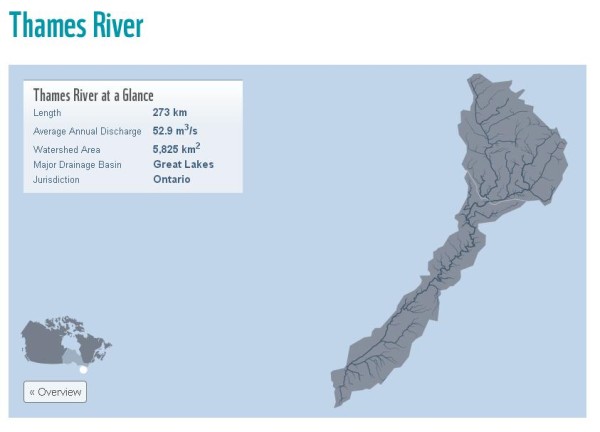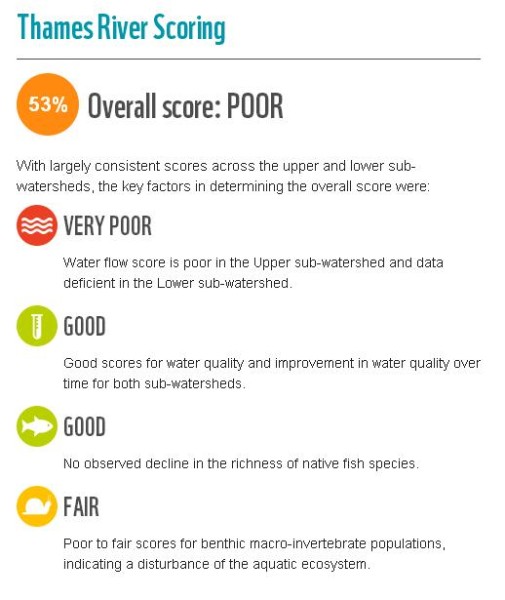Freshwater Health Assessment: The Thames River Story
The Thames River was one of the first rivers evaluated with WWF’s Freshwater Health Assessments (FHA). Scores for the upper and lower Thames River were rolled up to an overall river health score. While the overall score for the river is poor the river received good scores for our water quality and fish species metrics. But there is more to the river and its health, so we asked Lower Thames Valley Conservation Authority to share what these scores mean on the Thames. This is their story….
By Don Pearson and Bonnie Carey of the Lower Thames Valley Conservation Authority
The Thames River is a majestic river at 273 km that meanders through some of Canada’s most productive farmland and the southwestern Ontario cities of Woodstock, London and Chatham on its way to Lighthouse Cove and Lake St. Clair. The Thames River Watershed is home to 15% of Canada’s Species at Risk (including the Eastern Spiny Sortshell turtle and Wood Poppy) but it also has a diversity of fish and animal species that provides many angling, hunting, and trapping opportunities.
Water flow was a key metric and received a poor score. Let’s talk about that altered flow because it’s important to appreciate the Thames River in its context. It is one of the most completely developed watersheds in Ontario, home to expansive areas of productive agricultural land and more than 600,000 people living in five urban centres and dozens of smaller communities. This extensive settlement has resulted in a completely altered landscape from the one first encountered by European Settlers in the 17th century.
This dramatic change in land use has had a corresponding impact on the watershed’s hydrology – how precipitation and runoff interact with the landscape, affecting with both surface and groundwater. During spring snowmelt or heavy rainfall, surface water accumulates rapidly and runs off into tributaries and the main river. Extreme flows can result that threatens communities which historically located within the river valleys to access water for powering mills, or for transportation. (Many of these historic mill dams remain to this day.) During dryer periods, flows are reduced to a fraction, as there is insufficient discharge from groundwater to maintain flows.
These cyclical conditions of flood and drought created often devastating consequences for not only the human population but for aquatic species as well. As a result, a system of dams and reservoirs were constructed between in the late 1940’s and the mid-1960’s. While extremely beneficial for moderating both high and low flows, these structures and their attendant reservoirs can have some negative impacts on water quality and can alter the natural aquatic communities. These costs and benefits of these measures represent the tradeoffs necessary for managing water for nature and people.
But we have learned a great deal about the impacts of human activity on nature and fortunately much has been accomplished as we learn to live more sustainably, respecting our natural heritage and treating our freshwater resources as though our lives depended on them. Much remains to be done, and the key to galvanizing action is public awareness. We hope our freshwater health assessments contribute to our understanding of the importance of these resources and a greater awareness of our collective responsibility for their stewardship.



